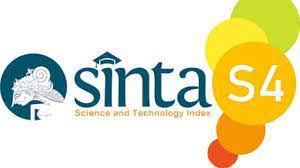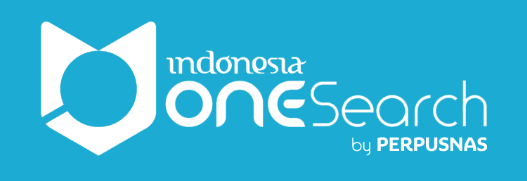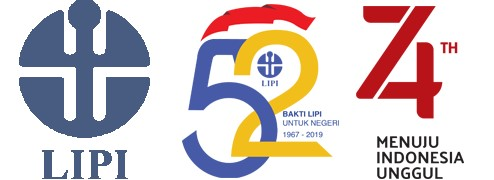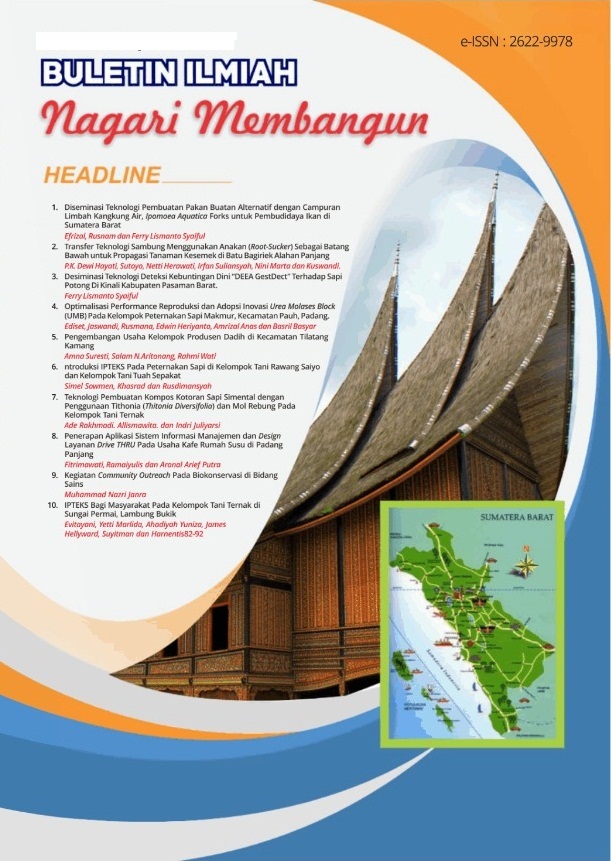EDUKASI PEMBUATAN PETA POTENSI SEKTOR PERTANIAN BERBASIS PARTISIPATIF BAGI MASYARAKAT DI DESA BATU TANJUNG KOTA SAWAHLUNTO
Abstract
Batu Tanjung Village is located in Sawahlunto City, West Sumatra, which is better known as coal mines village. Therefore, its agricultural and livestock potential has not been developed and utilized optimally. Generally, the people work as farmers, however they do not know in detail about the potential of the agricultural and livestock sectors. This community service activity aimed to (1) explore the actual potential of the agricultural sector, and (2) mapping the potential of the agricultural sector on participatory base and GIS. The methods used in this activity were survey of agricultural potential, participatory mapping using the Participatory Rural Appraisal (PRA) method, SWOT analysis for developing strategies of agricultural and livestock sectors. The results of this activity show the superior potential of the village, namely rice (320 ha), rubber (76 ha), cocoa (9 ha), coconut (32 ha), and areca nut (35 ha). The potential for the food sector is almost evenly distributed in all hamlets in Batu Tanjung Village. Some of the leading potentials in the livestock sector in Batu Tanjung Village are buffalo (239), cows (141), purebred chickens (6264) and quail (996). The conclution of this activity shown the potential of the village's agricultural and plantation sectors, namely rice, corn, rubber, cocoa, areca nut and coconut which are spread throughout all hamlets in Batu Tanjung Village. The potential for the livestock sector are buffalo, cows and laying hens. Furthermore, this activity also produced a potential map of the agricultural, plantation and livestock sectors of Batu Tanjung Village with a scale of 1:120 and was submitted to the Head of Village.
Downloads
References
Badan Pusat Statistik (BPS). (2023). Kecamatan Talawi dalam Angka 2023. BPS Kota Sawahlunto. https://sawahluntokota.bps.go.id/publication/2023/09/26/9685e8ade3ce86b1a27570ed/kecamatan-talawi-dalam-angka-2023.html
Harahap, M., Siregar, G., & Venny Riza, F. (2020). Pertanian Desa Lubuk Kertang Kecamatan Berandan Barat Kabupaten Langkat. Journal of Agribusiness Sciences, 4(1), 8–14. https://doi.org/10.30596/jasc.v4i1.6267
Ladung, F., & Syukri, F. (2022). Pemetaan Potensi Desa Sebagai Koorbisnis Bumdes dalam Meningkatkan Perekonomian Desa (Desa Cemba Kecamatan Enrekang Kabupaten Enrekang). Jurnal Mirai Management, 7(2), 256–265. https://doi.org/10.37531/mirai.v7i2.2014
Prayitno, G., Reza Pahlevi, M., Pridayanti, A., & Wigayatri, M. (2020). Pemetaan Potensi Pertanian Desa Brongkal Kecamatan Pagelaran Berbasis Partisipatif. Geography, 8(1), 64–76. https://doi.org/10.31764/geography.v8i1.2275
Setiyanto, A. (2013). Pendekatan dan Implementasi Pengembangan Kawasan Komoditas Unggulan Pertanian. Forum Penelitian Agro Ekonomi, 31(2), 171–195. https://doi.org/10.21082/fae.v31n2.2013.171-195
Soleh, A. (2017). Strategi Pengembangan Potensi Desa. Jurnal Sungkai, 5(1), 32–52. https://doi.org/10.30606/js.v5i1.1181
Sulaiman, A. I., Sugito, T., & Sabiq, A. (2017). Komunikasi Pembangunan Partisipatif untuk Pemberdayaan Buruh Migran. Jurnal Ilmu Komunikasi, 13(2), 233–252. https://doi.org/10.24002/jik.v13i2.734
Triyani, E., Agustian Hudjimartsu, S., & Primasari, D. (2022). Spasial Clustering Potensi Peternakan Unggas dengan Metode K-Meands Berbasis WebGIS. Infotech Journal, 8(2), 10–18. https://doi.org/10.31949/infotech.v8I2.2627





















